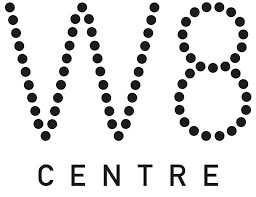Embracing Urban Alternatives: Paving the Path for Sustainable Development
Introduction:
In the pursuit of sustainable development, cities stand at the forefront of innovation and adaptation. As urbanization continues to surge worldwide, with more than half of the global population residing in urban areas, the need for sustainable urban development has never been more pressing. Traditional urban models are often synonymous with congestion, pollution, and resource depletion. However, emerging urban alternatives offer promising avenues to mitigate these challenges and foster environmentally friendly, socially equitable, and economically viable cities. This article delves into the concept of urban alternatives and their pivotal role in achieving sustainable development.
Understanding Urban Alternatives:
Urban alternatives encompass a spectrum of approaches, strategies, and technologies aimed at reimagining urban spaces to prioritize sustainability. These alternatives diverge from conventional models by integrating principles of environmental stewardship, social inclusivity, and economic resilience into urban planning and development. Key facets of urban alternatives include:
Compact and Mixed-Use Development: Promoting compact, mixed-use urban forms minimizes sprawl, reduces the need for car-dependent lifestyles, and fosters vibrant, walkable communities. By concentrating development in existing urban areas, cities can optimize land use, preserve natural habitats, and enhance connectivity between residential, commercial, and recreational zones.
Green Infrastructure and Nature-Based Solutions: Incorporating green spaces, urban forests, and natural water management systems into city planning can mitigate the urban heat island effect, improve air quality, and mitigate flooding. These nature-based solutions not only enhance urban resilience to climate change but also provide recreational spaces and habitat for biodiversity.
Public Transportation and Active Mobility: Prioritizing public transportation, cycling, and pedestrian infrastructure reduces carbon emissions, alleviates traffic congestion, and enhances public health. Investments in efficient, affordable public transit systems and pedestrian-friendly pathways promote equitable access to mobility while reducing reliance on private vehicles.
Renewable Energy Integration: Transitioning towards renewable energy sources such as solar, wind, and hydroelectric power reduces urban carbon footprints and enhances energy security. Urban areas can leverage renewable energy technologies to power buildings, transportation networks, and public facilities, fostering a low-carbon urban energy transition.
Circular Economy Practices: Embracing circular economy principles, cities can minimize waste generation, promote resource efficiency, and foster sustainable consumption and production patterns. Strategies such as recycling, composting, and waste-to-energy initiatives contribute to a closed-loop urban metabolism, where resources are reused, repurposed, and recycled to minimize environmental impact.
Case Studies in Urban Alternative Implementation:
Several cities worldwide have embraced urban alternatives to catalyze sustainable development:
Copenhagen, Denmark: Renowned for its cycling culture and extensive network of bike lanes, Copenhagen prioritizes active mobility and sustainable transportation. The city’s commitment to renewable energy and climate adaptation measures has positioned it as a global leader in urban sustainability.
Curitiba, Brazil: Curitiba pioneered innovative public transportation systems, including the Bus Rapid Transit (BRT) system, which efficiently serves millions of residents while minimizing emissions and congestion. The city’s green spaces and urban parks enhance biodiversity and quality of life for its inhabitants.
Singapore: Despite its limited land area, Singapore has emerged as a model of compact, sustainable urban development. The city-state integrates green infrastructure, such as rooftop gardens and vertical greenery, to mitigate urban heat and promote biodiversity conservation.
Urban alternatives offer a transformative vision for sustainable development, reshaping cities into resilient, inclusive, and environmentally responsible hubs of human activity. By embracing compact, green, and connected urban forms, cities can mitigate environmental degradation, enhance quality of life, and foster economic prosperity for present and future generations. As urbanization accelerates, prioritizing sustainable urban development is imperative to create thriving cities that serve as beacons of sustainability and resilience on a global scale.
Judyth BABIN
Chargée de projets européens | European project manager
LE LABA
lelaba.eu








